where子句:根据条件表达式从数据源中筛选符合条件的记录
select 字段列表 from 数据源 where 条件表达式;
1、比较运算符:
> < >= <= = !=(<>)
注意等于是单个等于号,不等于也可以用<>表示;
例如,查找及格的项:
select * from choose where score>=60;

例如:查找 张三 的考试成绩信息,需要用到内连接;
select s.student_no 学号,s.student_name 名字, c.score 成绩 from student s join choose c on s.student_no=c.student_no where s.student_name = '张三';

2、where实现内连接:
from 这儿使用逗号代替join;
select 字段列表 from 表1,表2 where 关联条件;
select student_no 学号,student_name 名字,c.class_no 班级名 from student s, classes c where s.class_no=c.class_no;
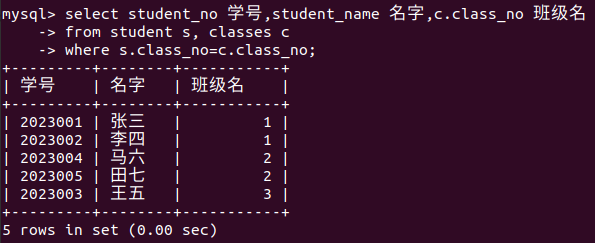
3、is null判断是否为空
注意这儿的判断是否为空,不能用 =null 或者 != null ,这个表示 此条件永远为 null,通俗讲就是永远为false;
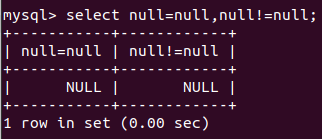
例如 列出没有班级的学生:也是需要先用大外连接
select c.class_no 班号,class_name 班级名,department_name 院名,s.* from classes c left join student s on c.class_no=s.class_no;

可以看到测控班没有学生,那么使用where子句进行筛选;
select c.class_no 班号,class_name 班级名,department_name 院名,s.* from classes c left join student s on c.class_no=s.class_no where s.student_no is null;

4、between...and:
格式:表达式 between 值1 and 值2
select * from choose where score between 70 and 90;

select * from choose where choose_time between '2023-05-25 21:34:11' and '2023-05-25 21:34:41';

5、in:
格式:表达式 in (值1,值2,...)
select ch.student_no 学号,c.course_name 课程名,ch.score 成绩 from course c join choose ch on c.course_no=ch.course_no where c.course_name in ('c++','MySQL');

6、like:
格式:表达式 like '模式'
通配符:% :匹配任意长度的任意字符; _ :匹配一位任意字符;
select student_no 学号, student_name 姓名 from student where student_name like '张%';

注意:当碰到要查找的字符本身含有_时,查找时,会认为这个是通配符;
例如,查找user_为开头的,,若查找时格式为 ’user_%‘,并不是以这个为开头,而是‘user’开头的,会把_当作通配符处理;
select table_schema,table_type,table_name from information_schema.tables where table_name like 'user_%';

可以看到第一项为users,并不是user_开头的;
处理方法:
1)此时需要我们将其转义为下划线, 即使用转义字符 '\',所以格式为:这种方法是关系型数据库MySQL独有的,不适合于其他关联性数据库;
select table_schema,table_type,table_name from information_schema.tables where table_name like 'user\_%';

可以看到正如我们想要的一样;
2)我们也可以自定义通配符;适合于其他关联性数据库;
select table_schema,table_type,table_name from information_schema.tables where table_name like 'user#_%' escape '#';
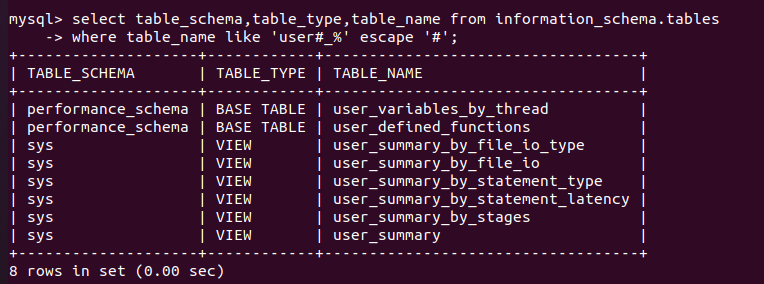
一样的效果;
7、and运算符
1)代替between and;
select * from choose where score>=60 and score<=90;

2)where内连接,查找信息
select s.student_no 学号,s.student_name 姓名,c.score 成绩 from student s,choose c where s.student_no=c.student_no and s.student_name='张三';

3)三表内连接;
格式:
select 字段列表 from 表1,表2,表3 where 关联条件1 and 关联条件2;
例如 检索所有学生信息:
select s.student_name 姓名,s.student_no 学号,c.course_name 课程,ch.score 成绩 from student s,course c,choose ch where s.student_no=ch.student_no and c.course_no=ch.course_no;

8、or:
select ch.student_no, c.course_name,ch.score from course c,choose ch where c.course_no=ch.course_no and (c.course_name='c++' or c.course_name='MySQL');
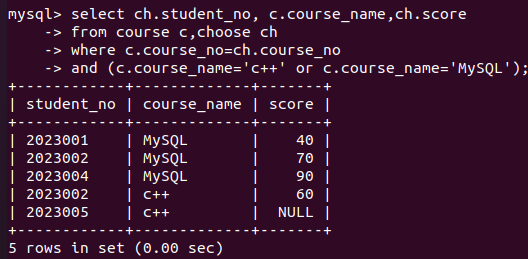
9、not:
格式:not 逻辑表达式 或者 !(逻辑表达式)
select * from course where up_limit!=60; select * from course where !(up_limit=60); select * from course where not(up_limit=60);

10、运算符取反:
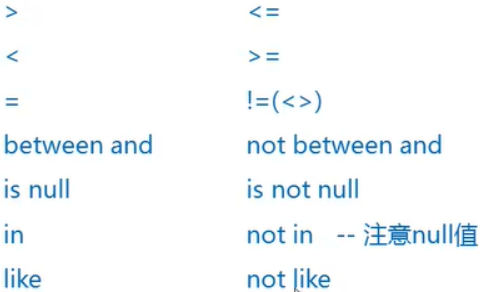
1):is null 取反;将有学生的班级列出;
select distinct c.* from student s right join classes c on c.class_no=s.class_no where s.student_no is not null;
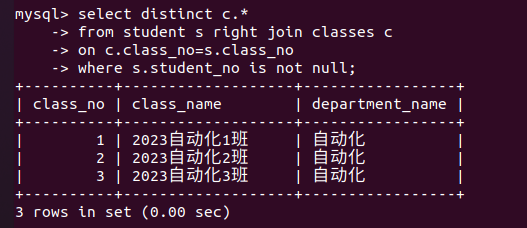
2)in 取反,not in,要注意为null的情况;
select * from student where class_no in(1,2); select * from student where class_no not in(1,2);
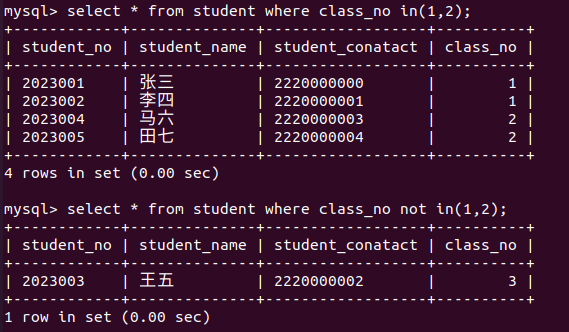
但是当in中有null的时候:
select * from student where class_no in(1,2,null); select * from student where class_no not in(1,2,null);
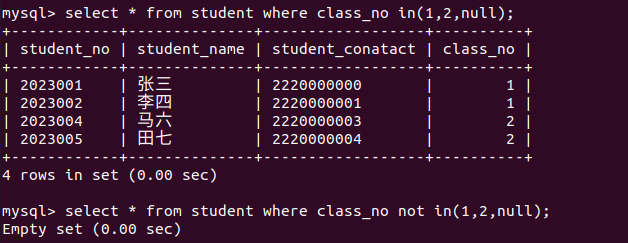
可以看到当in有null时,对它取反,得到 空结果集;
产生原因:
上述 is null 判断为空时说过,=null 和 != null 的情况,其结果都是false;必须要用is null 判断空;
class_no in(1,2,null) ==> class_no == 1 or class_no == 2 or class_no == null; 此处第三个条件 class_no == nul 条件永远为false; ==> class_no == 1 or class_no == 2 class_no not in(1,2,null) ==> class_no != 1 and class_no != 2 and class_no != null ;此处第三个条件 class_no != nul 条件永远为false;那么该条件与后最终就是false; ==> null
因此,当对有null值的in取反时,其结果集就是空的;